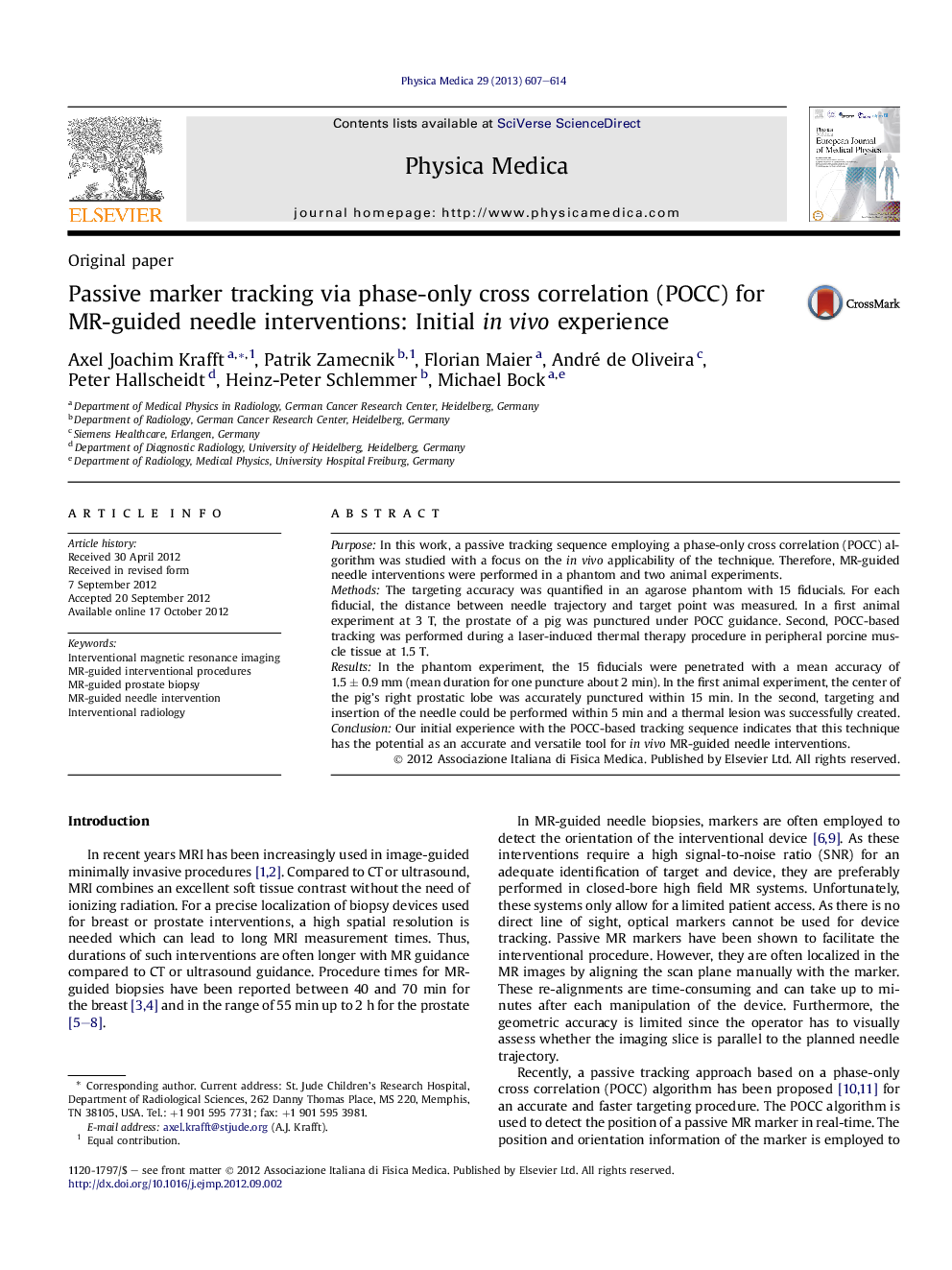| Article ID | Journal | Published Year | Pages | File Type |
|---|---|---|---|---|
| 1883309 | Physica Medica | 2013 | 8 Pages |
PurposeIn this work, a passive tracking sequence employing a phase-only cross correlation (POCC) algorithm was studied with a focus on the in vivo applicability of the technique. Therefore, MR-guided needle interventions were performed in a phantom and two animal experiments.MethodsThe targeting accuracy was quantified in an agarose phantom with 15 fiducials. For each fiducial, the distance between needle trajectory and target point was measured. In a first animal experiment at 3 T, the prostate of a pig was punctured under POCC guidance. Second, POCC-based tracking was performed during a laser-induced thermal therapy procedure in peripheral porcine muscle tissue at 1.5 T.ResultsIn the phantom experiment, the 15 fiducials were penetrated with a mean accuracy of 1.5 ± 0.9 mm (mean duration for one puncture about 2 min). In the first animal experiment, the center of the pig's right prostatic lobe was accurately punctured within 15 min. In the second, targeting and insertion of the needle could be performed within 5 min and a thermal lesion was successfully created.ConclusionOur initial experience with the POCC-based tracking sequence indicates that this technique has the potential as an accurate and versatile tool for in vivo MR-guided needle interventions.
